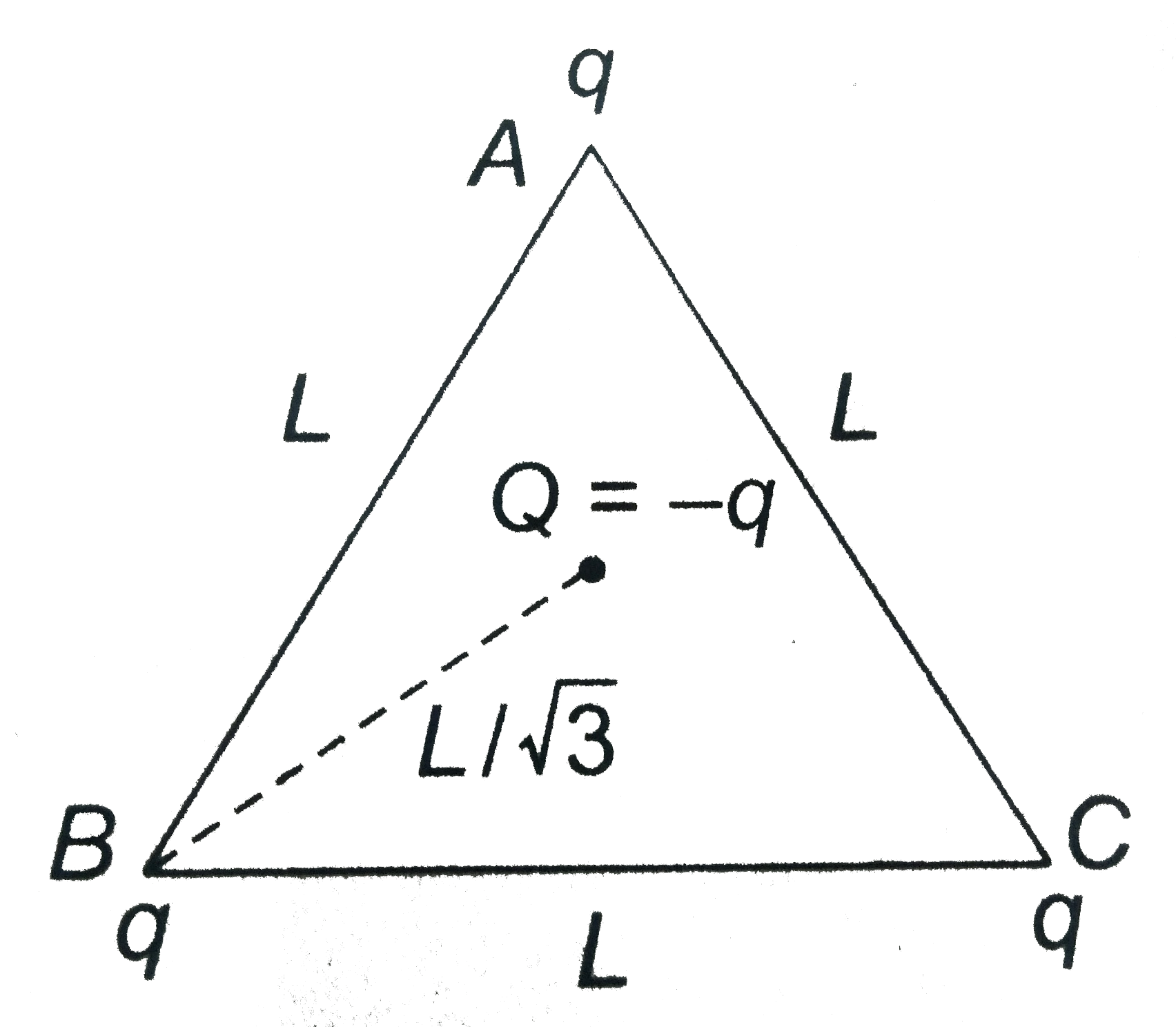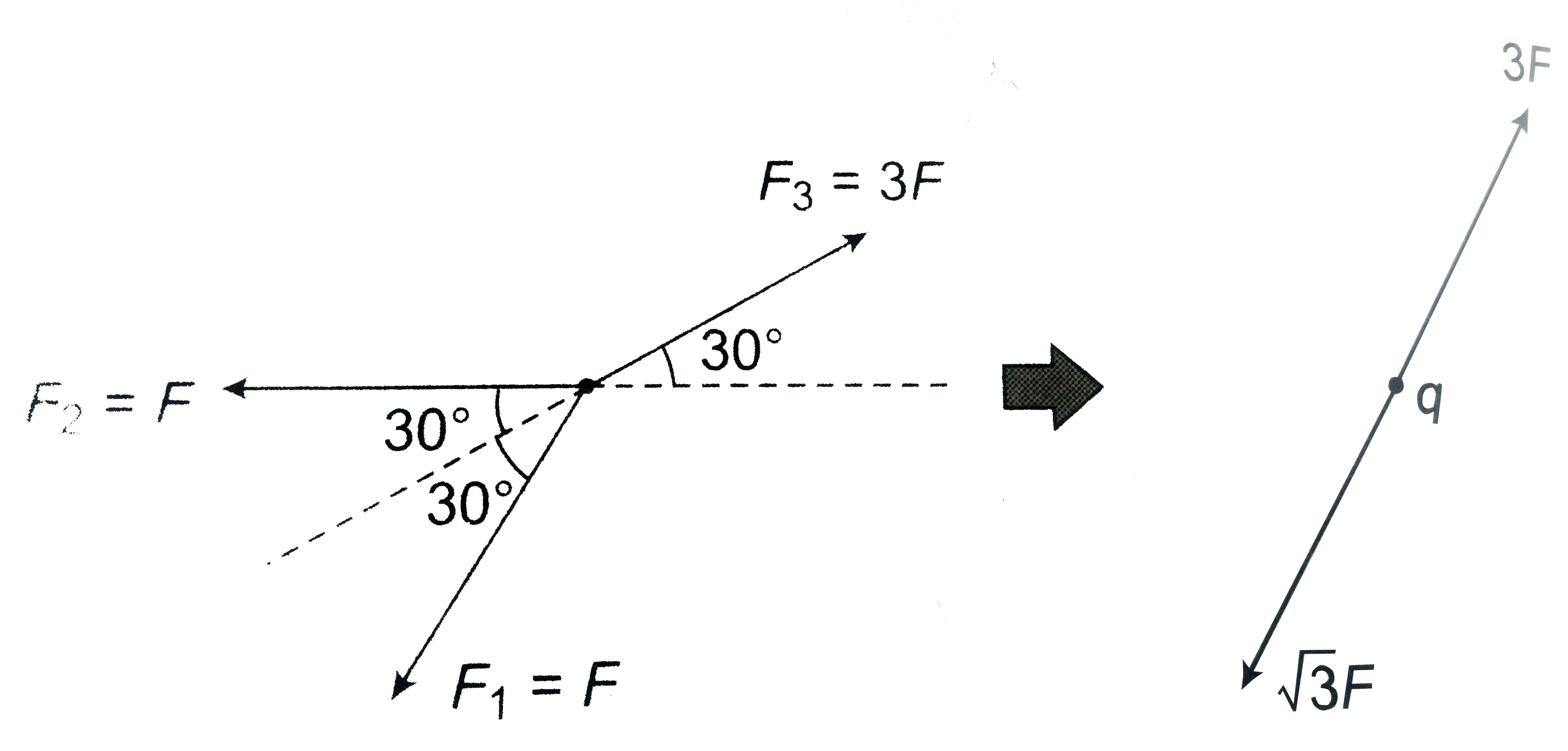Three charges each of value q are placed at the corners of an equilateral triangle. A fourth charge Q is placed at the centre of the triangle. If Q=−q:
the charges will move towards the centre
the charges will move away from the centre
the charges will remain stationary
the charges may move in any direction
The correct Answer is:1
Let F=14π∈0.q2L2
Charge q(atB):
Force due to q(atC):F2=F , along CB
Force due to Q=−q(atO):F3=14π∈0q.q(L√3)2=3F
The resultant force on each q is towards centre and equal to (3−√3)F.


Similar Questions
Three charges, each of value q, are placed at the vartices of an equilateral triangle. A fourth charge Q is placed at the centre of the triangle. (i) If Q=−q, will the charge at the vertices move towards the centre of fly away from it? (ii) For what value of Q will the charges remain stationary?
View Solutionतीन आवेश (प्रत्येक + q) एक समबाहु त्रिभुज के कोनों पर रखे गये हैं एक चौथा आवेश Q त्रिभुज के केन्द्र पर रखा जाता है: यदि Q=-q हो तो क्या कोनों पर रखे आवेश केन्द्र की ओर आयेंगे अथवा केन्द्र से दूर जायेंगे?
View SolutionThree equal charges Q are placed at the three corners of an equilateral triangle of side length a. Work done in shifting a charge q from infinity to the centroid of the triangle is
View Solutionतीन आवेश +q,+q और +q,a भुजा वाले एक समबाहु त्रिभुज के कोनों पर रखे जाते हैं। त्रिभुज के केंद्र पर रखे आवेश +q पर परिणामी वैधुत बल …….. पर है।
View SolutionABC is an equilateral triangle. Three identical charges each +q are placed at each corner. Electric intensity at the centroid of triangle is
View SolutionThree charges, q each, are placed at the vertices of an equilateral triangle. What will be the resultant force on charges Q placed at the centroid of the triangle?
View SolutionThree charge each of magnitude q are placed at the corners of an equilateral triangle , the electrostatic force on the charge placed at the centre is ( each side of triangle L).Their equilibrium is :
View SolutionThree charges, each of value q , are placed at the comers of an equilateral triangle. A fourth charge Q is placed at the centre of the triangle. If the value of Q for which charges remain stationary is ((-q)/(sqrt(n))) , then find n .
View Solution

